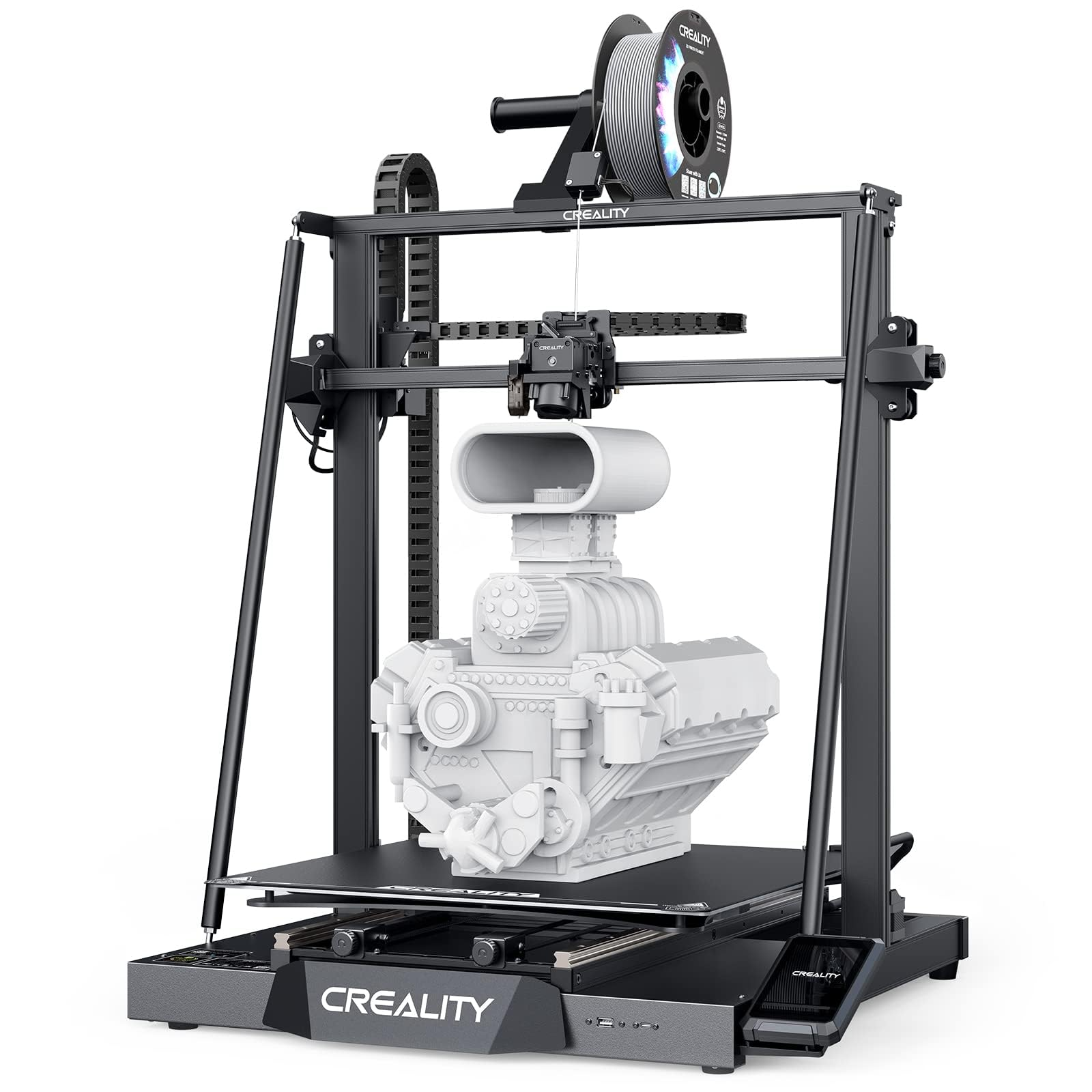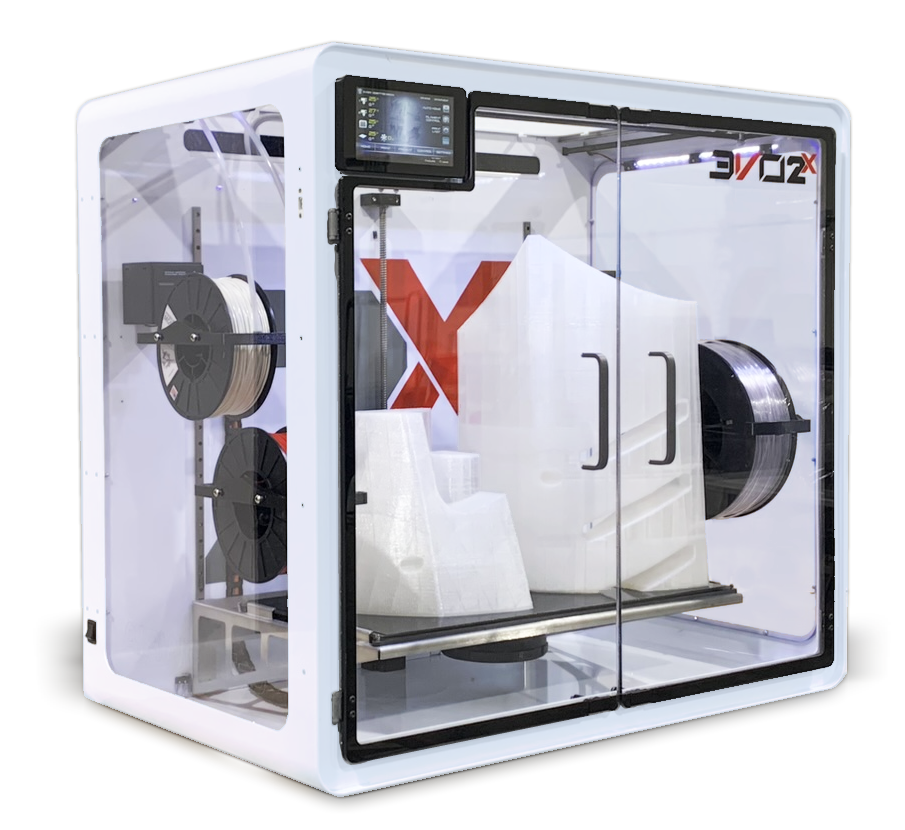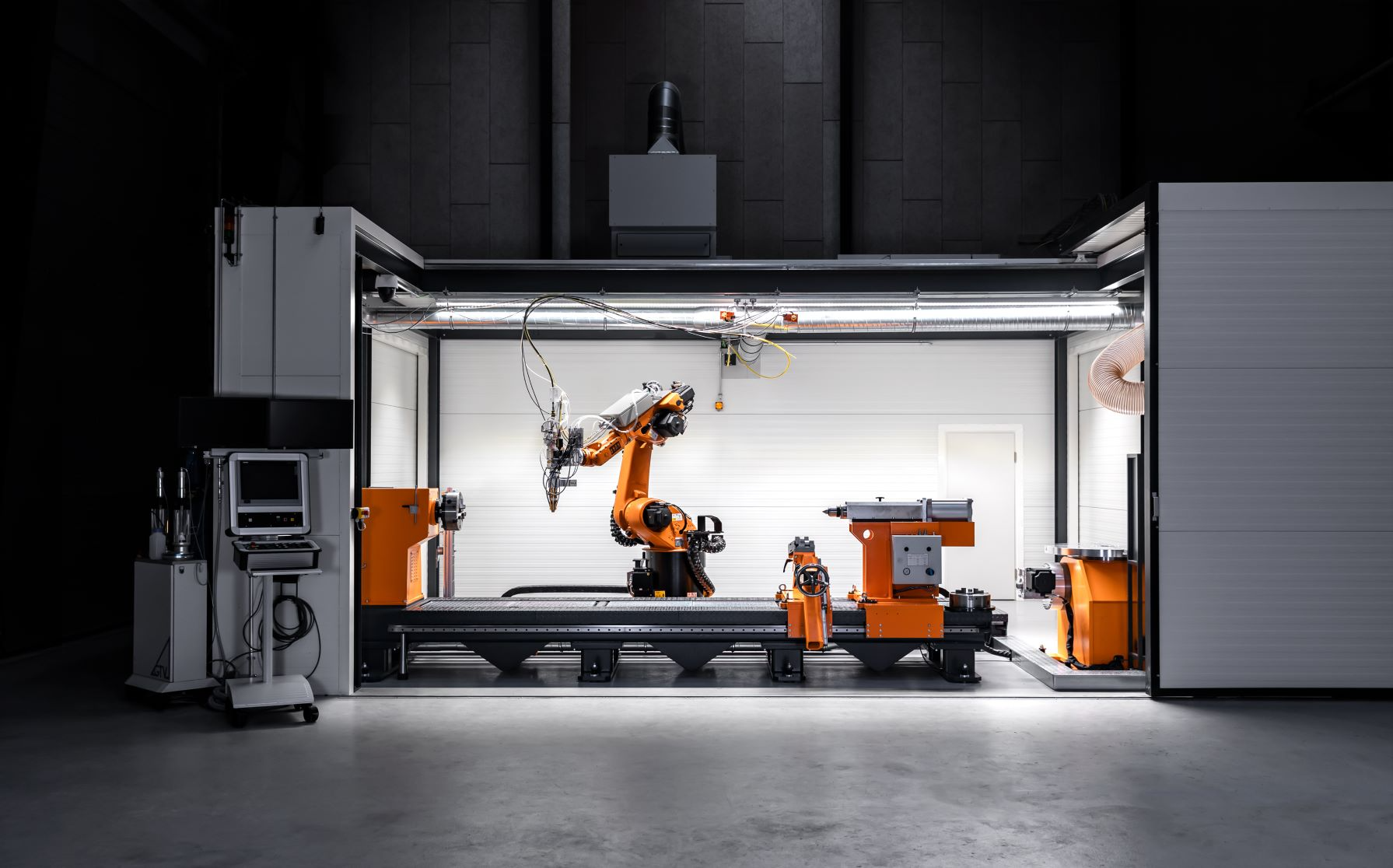In the field of additive manufacturing, large 3D printers play a crucial role. They push the boundaries of what can be created. These machines are capable of producing large-scale objects and offer new possibilities in various industries. This article explores the key features, benefits, and applications of large 3D printers. It also delves into practical considerations for selecting and using these versatile machines.
Introduction to Large 3D Printers
The Evolution of 3D Printing Technology
3D printing technology has come a long way since its inception in the 1980s. Initially, the focus was on creating small, intricate objects. Early 3D printers were limited in size and scope, catering mostly to hobbyists and small-scale projects. However, as technology evolved, so did the capabilities of 3D printers. The development of larger build volumes and more robust materials have paved the way for large 3D printers, which can now produce substantial and complex objects.
The evolution of 3D printing technology has been driven by various factors, including advancements in hardware, software, and material science. Improved precision, faster processing speeds, and a wider range of printable materials have all contributed to the growth of large 3D printers. These advancements have opened up new opportunities across different industries, from aerospace and automotive to construction and healthcare.
Today, large 3D printers are recognized for their potential to revolutionize manufacturing processes. They offer a cost-effective and efficient way to produce large-scale objects, reducing the need for traditional molds and tooling. This technology has become an integral part of modern manufacturing, providing a versatile and innovative solution for complex production challenges.
Defining Large 3D Printers
Large 3D printers are typically defined by their build volume, which refers to the maximum size of an object that can be printed. These printers often feature build volumes much larger than those of standard desktop 3D printers, enabling them to produce sizable and intricate objects. The specific dimensions of large 3D printers can vary, but they generally accommodate objects measuring several feet in width, depth, and height.
In addition to their impressive build volumes, large 3D printers often incorporate advanced features and capabilities. These may include multiple extruders for multi-material printing, advanced cooling systems to ensure consistent print quality, and enhanced structural integrity to support the weight and complexity of large objects. These features set large 3D printers apart from their smaller counterparts, making them suitable for a wide range of industrial and commercial applications.
The materials used in large 3D printers also play a significant role in defining their capabilities. While standard desktop 3D printers often use plastics like PLA and ABS, large 3D printers can work with a broader range of materials, including high-performance polymers, composites, metals, and even concrete. This diversity of materials expands the potential applications of large 3D printers, enabling them to meet the demands of various industries.
Key Features of Large 3D Printers
Impressive Build Volume
One of the standout features of large 3D printers is their impressive build volume. The ability to print large objects in a single piece offers numerous advantages, including improved structural integrity and reduced assembly time. Large 3D printers can accommodate objects measuring several feet in width, depth, and height, making them suitable for producing sizable prototypes, functional parts, and complex assemblies.
The substantial build volume of large 3D printers also allows for greater design freedom. Designers and engineers can create intricate and ambitious structures without being constrained by the limitations of smaller build volumes. This capability is particularly valuable in industries where large components are required, such as aerospace, automotive, and construction. The ability to produce large-scale objects in a single print run reduces the need for assembly and minimizes potential weak points, resulting in stronger and more reliable parts.
In addition to their size, large 3D printers often feature modular build platforms that can be expanded or customized to accommodate specific project requirements. This flexibility ensures that the printer can adapt to various applications, providing a versatile solution for different production needs. The impressive build volume of large 3D printers sets them apart as a valuable tool for creating substantial and complex objects.
Advanced Material Capabilities
Large 3D printers are designed to work with a wide range of materials, offering greater versatility and functionality. While standard desktop 3D printers typically use plastics like PLA and ABS, large 3D printers can handle high-performance polymers, composites, metals, and even concrete. This diversity of materials expands the potential applications of large 3D printers, enabling them to meet the demands of various industries.
High-performance polymers, such as polycarbonate (PC) and nylon, are commonly used in large 3D printing due to their excellent mechanical properties and durability. These materials are ideal for producing functional prototypes, end-use parts, and structural components that require strength and resilience. The ability to print with high-performance polymers ensures that large 3D printers can deliver parts that meet strict performance and safety standards.
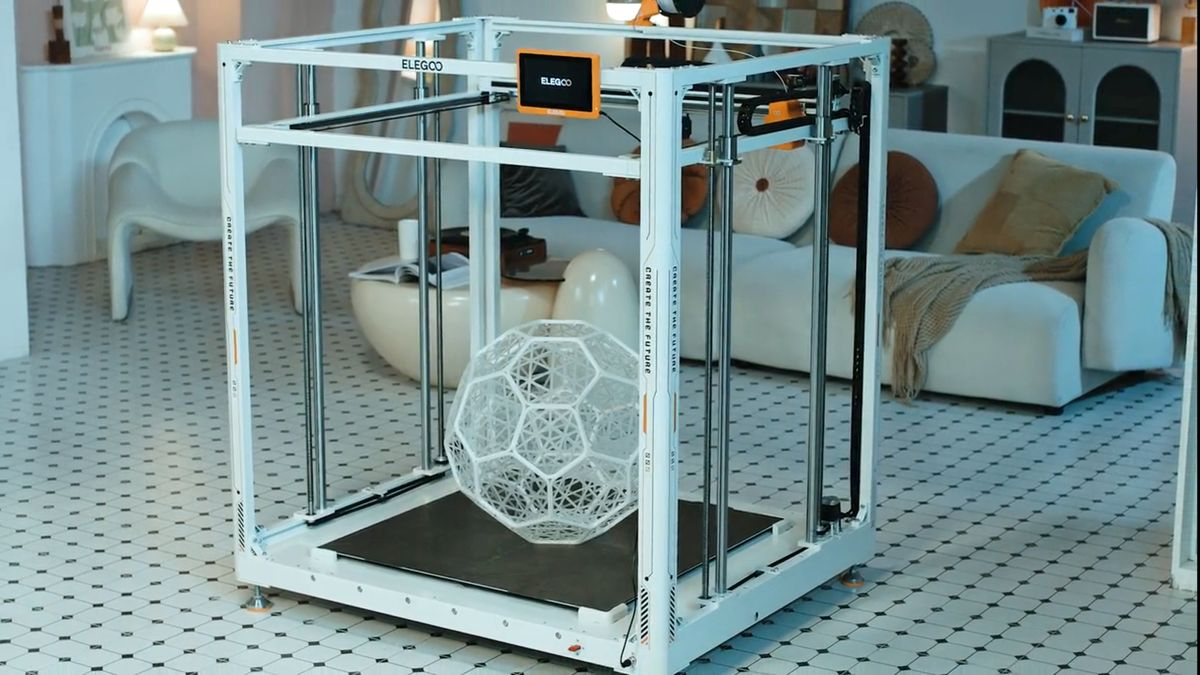
Composite materials, which combine different materials to enhance specific properties, are also popular in large 3D printing. For example, carbon fiber-reinforced polymers offer exceptional strength-to-weight ratios, making them suitable for aerospace and automotive applications. The use of composite materials in large 3D printers enables the production of lightweight yet robust parts, reducing weight while maintaining structural integrity.
Metal 3D printing has also gained traction in recent years, with large 3D printers capable of producing metal parts through techniques such as direct metal laser sintering (DMLS) and electron beam melting (EBM). Metal 3D printing is valuable for producing high-strength components and complex geometries that are difficult to achieve with traditional manufacturing methods. The advanced material capabilities of large 3D printers ensure that they can meet the demands of diverse and challenging applications.
Precision and Accuracy
Precision and accuracy are critical factors in 3D printing, and large 3D printers are designed to deliver exceptional performance in these areas. Despite their substantial build volumes, large 3D printers maintain high levels of precision and accuracy, ensuring that printed objects meet exact specifications and quality standards. Advanced features such as closed-loop control systems, high-resolution sensors, and precision motor drives contribute to the printer’s ability to produce detailed and accurate parts.
Closed-loop control systems monitor and adjust the printing process in real-time, ensuring that the printer maintains consistent performance and accuracy. High-resolution sensors detect any deviations or errors, allowing for immediate correction and optimization. Precision motor drives provide smooth and controlled movement of the print head and build platform, reducing the risk of layer misalignment and ensuring consistent print quality.
The precision and accuracy of large 3D printers make them suitable for applications that require tight tolerances and intricate details. This capability is particularly valuable in industries such as aerospace, medical, and automotive, where precision and reliability are critical. The ability to produce highly accurate and detailed parts ensures that large 3D printers can meet the stringent requirements of these demanding applications.
Robust Construction and Durability
Large 3D printers are going to build to handle the demands of industrial and commercial use, featuring robust construction and durable components. The frame and structural elements of these printers are going to design to provide stability and support, ensuring that the printer can handle the weight and complexity of large objects. High-quality materials, such as aluminum and steel, are commonly used in the construction of large 3D printers, providing strength and rigidity.
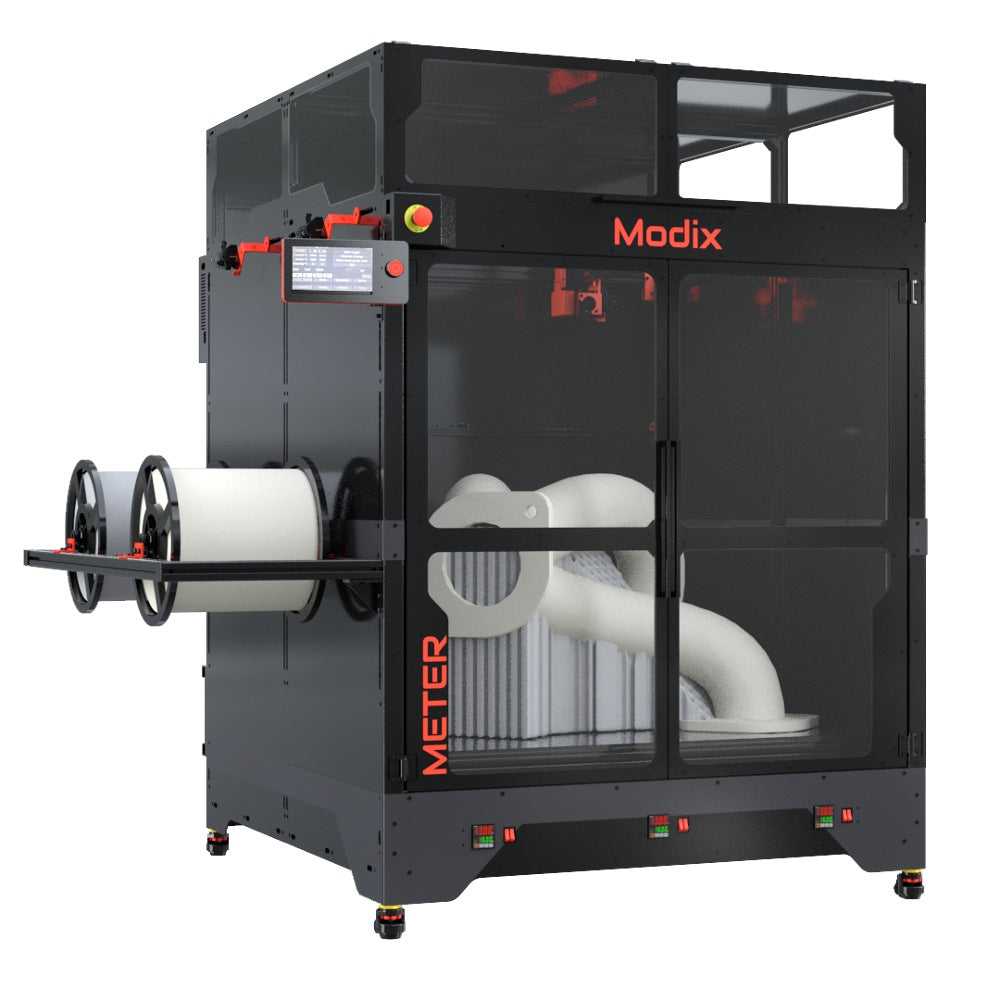
The durability of large 3D printers extends to their mechanical and electrical components. Precision motor drives, high-torque stepper motors, and advanced control systems are going to design to withstand the rigors of continuous operation, ensuring reliable and consistent performance. The use of high-quality components reduces the risk of downtime and maintenance, ensuring that the printer can deliver consistent results over extended periods.
The robust construction and durability of large 3D printers make them suitable for demanding industrial environments. These printers are capable of handling high workloads and continuous operation, providing a reliable solution for large-scale production. The combination of stability, strength, and durability ensures that large 3D printers can meet the demands of various applications and industries.
Benefits of Using Large 3D Printers
Enhanced Design Freedom and Innovation
One of the primary benefits of using large 3D printers is the enhanced design freedom and innovation they offer. The substantial build volume and advanced material capabilities of these printers allow designers and engineers to create complex and ambitious structures that would be challenging or impossible with traditional manufacturing methods. This design freedom encourages innovation and creativity, enabling the development of novel products and solutions.
Large 3D printers eliminate many of the constraints associated with traditional manufacturing, such as the need for molds, tooling, and assembly. Designers can create custom geometries, intricate internal structures, and optimized designs that improve performance and functionality. This capability is particularly valuable in industries such as aerospace, automotive, and healthcare, where innovation and optimization are critical.
The ability to rapidly produce prototypes and iterate designs further enhances the innovation process. Large 3D printers enable quick and cost-effective prototyping, allowing designers to test and refine their ideas before moving to mass production. This iterative approach reduces development time and costs, ensuring that products can be going to bring to market more quickly and efficiently.
Cost Savings and Efficiency
Large 3D printers offer significant cost savings and efficiency benefits compared to traditional manufacturing methods. The ability to produce large objects in a single print run reduces the need for assembly and minimizes labor costs. Additionally, the elimination of molds and tooling reduces setup costs and lead times, providing a more cost-effective solution for producing large and complex parts.
The efficiency of large 3D printers extends to their material usage and waste reduction. Traditional manufacturing methods often result in significant material waste, particularly when creating complex geometries. In contrast, 3D printing is an additive process, meaning that material is only going to use where it is going to need. This minimizes waste and reduces material costs, providing a more sustainable and cost-effective solution.
The ability to produce on-demand parts further enhances efficiency and cost savings. Large 3D printers can quickly produce parts as needed, reducing the need for large inventories and storage costs. This on-demand production capability ensures that parts are readily available, reducing downtime and improving operational efficiency.
The combination of reduced material waste, lower setup costs, and on-demand production makes large 3D printers a cost-effective and efficient solution for various manufacturing applications. These benefits ensure that large 3D printers can deliver significant value and return on investment.
Customization and Personalization
Large 3D printers enable a high degree of customization and personalization, allowing for the production of unique and tailored products. The ability to create custom geometries and designs ensures that parts can be going to optimize for specific applications and requirements. This customization capability is particularly valuable in industries such as healthcare, where personalized medical devices and implants can significantly improve patient outcomes.
In the automotive and aerospace industries, customization allows for the production of optimized and lightweight components that enhance performance and efficiency. The ability to create custom parts ensures that each component is going to tailor to meet specific design and performance criteria, resulting in better overall systems.
The ability to produce personalized products also opens up new business opportunities. Companies can offer customized and unique products that cater to individual customer preferences, providing a competitive advantage in the market. This personalization capability ensures that large 3D printers can meet the demands of various industries and applications, providing a versatile and innovative solution.
Reduced Time to Market
The rapid prototyping and production capabilities of large 3D printers significantly reduce the time to market for new products. Traditional manufacturing methods often involve lengthy setup and lead times, particularly when creating complex molds and tooling. In contrast, large 3D printers can quickly produce prototypes and parts, allowing for faster development and iteration.
The ability to rapidly iterate designs and test prototypes ensures that products can be going to refine and optimized more quickly. This iterative approach reduces development time and costs, ensuring that products can be going to bring to market more efficiently. The reduced time to market provides a competitive advantage, allowing companies to respond more quickly to market demands and opportunities.
The on-demand production capability of large 3D printers further reduces time to market by ensuring that parts are readily available. The ability to quickly produce parts as going to need reduces lead times and ensures that production schedules can be going to meet. This capability is particularly valuable in industries with tight production timelines and high demand for flexibility.
The combination of rapid prototyping, reduced lead times, and on-demand production ensures that large 3D printers can significantly reduce the time to market for new products. This capability provides a valuable advantage in today’s fast-paced and competitive market.
Environmental Sustainability
Large 3D printers offer several environmental sustainability benefits compared to traditional manufacturing methods. The additive nature of 3D printing minimizes material waste, reducing the environmental impact of production. Traditional manufacturing methods often result in significant material waste, particularly when creating complex geometries. In contrast, 3D printing only uses material where it is going to need, minimizing waste and conserving resources.
The ability to produce on-demand parts further enhances sustainability by reducing the need for large inventories and storage. On-demand production ensures that parts are only going to produce when needed, reducing the energy and resources required for storage and transportation. This capability also reduces the environmental impact of overproduction and excess inventory.
The use of sustainable and recyclable materials in large 3D printing further contributes to environmental sustainability. Many 3D printing materials are going to design to be recyclable or biodegradable, reducing the environmental impact of production and disposal. The ability to use sustainable materials ensures that large 3D printers can meet the growing demand for environmentally friendly production methods.
The combination of reduced material waste, on-demand production, and the use of sustainable materials ensures that large 3D printers offer a more environmentally sustainable solution for manufacturing. This capability aligns with the increasing focus on sustainability in today’s market, providing a valuable advantage for companies and industries.
